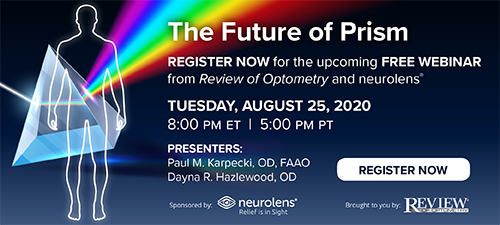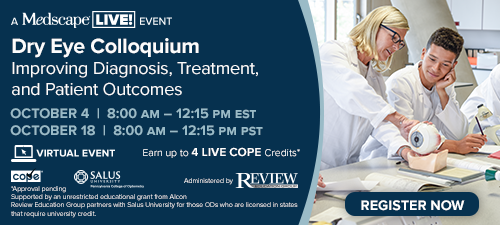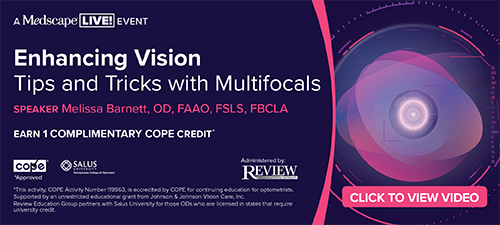
A
weekly e-journal by Art Epstein, OD, FAAO
Off the Cuff: Reality Sets In
When it started early in 2020, most of us were convinced that COVID was going to be just a temporary problem. After all, we live in the USA with the most advanced health care in the world. Unfortunately, as all of you now know, as the COVID virus spread, our lives changed. What many still don’t realize is just how profound those changes have been and will continue to be. Meetings, both large and small, may not return for the foreseeable future. Vision Expo East was the first national meeting to be cancelled but it won’t be the last. Most state meetings cancelled in an abundance of caution for members or due to local edict. It’s not just in eye care. Major meetings cancelled or went virtual, including the CES in January—one of the largest events in the world. Don’t expect to see a live in-person meeting until late 2021, if then. For virtually all of us, practice has changed. Most sane doctors are wearing PPE and requiring staff and patients to wear face coverings. Disinfection theatre is part of our daily routine, and patient distancing, barriers and other things that separate us from our patients are now expected, if not required. It has been a long time since I’ve seen a patient’s face or vice versa, and it has changed the dynamic in the office. Masks hurt and I don’t like wearing them, but I will be surprised if they come off by this time next year. Education may be the area of biggest change. From schools to CE, education went virtual almost immediately. I don’t think it likely that it will go back to the way it was. This may be one of the very few silver linings of COVID, as traditional forms of education were growing long in the tooth and change was needed. Our educational institutions must find new ways of educating, our national meetings will consolidate or risk dissolution. It will likely be a quite a while before attendance returns to normal. As a profession we must find ways to support state and national organizations because of their inherent value, not because they host meetings and offer CE. If you are wondering how I’ve come to these conclusions, it is because they are obvious. COVID is a peculiar virus that does very odd, complicated things to the body. If anything, it is unpredictable, and we actually know frighteningly little about it. Many people don’t even know they have it. Some people get so sick they die. As we discovered in Arizona, COVID is a resilient and tenacious foe. Just when we think we’ve figured it out and vanquished it, it comes roaring back. At this point, controlling it is only temporary and tenuous.
|
||||||
 |
||
| Neuro-Ophthalmological Manifestations of Obstructive Sleep Apnea: Current Perspectives | ||||
Obstructive sleep apnea (OSA) is a disease of obstructed airways during sleep that significantly impacts the quality of life and increases the risk of various systemic diseases. The authors wrote that OSA has been studied as a risk factor for a number of neuro-ophthalmic conditions and a strong relationship has been established with non-arteritic anterior ischemic optic neuropathy (NAION). The incidence of glaucoma and stroke have also been significantly associated with OSA and are conditions that may also be seen by neuro-ophthalmologists, they added. Patients with NAION have a significantly higher incidence of OSA, and OSA diagnosis significantly increases the risk for NAION development, they also noted. Non-compliance with continuous positive airway pressure (CPAP) in OSA patients has also been found to be a risk factor for fellow-eye involvement. and there is increasing evidence to suggest that every patient with NAION should be formally evaluated with polysomnography, the authors continued. The relationship between OSA and idiopathic intracranial hypertension (IIH) has also been studied, but the relationship between these two conditions is less clear. |
||||
SOURCE: Farahvash A, Micieli JA. Neuro-ophthalmological manifestations of obstructive sleep apnea: current perspectives. Eye Brain. 2020; Jul 7. [Epub ahead of print]. |
||||
 |
||
| Vision Needs of Children Who Failed School-based Vision Screening with and without Eyeglasses | ||||
Students ages four to 16 in 41 Baltimore City schools were screened using distance visual acuity (VA) and photoscreening to compare the vision needs of children wearing and not wearing eyeglasses who failed school-based vision screening. Students failing screening underwent school-based, non-cycloplegic examination. They compared students who were wearing eyeglasses at failed screening with those not wearing eyeglasses with respect to age, sex, right-eye refractive error, right-eye presenting and best-corrected VA (BCVA). A total of 2,176 students failed screening and completed the examination; 94 (4.3%) failed while wearing eyeglasses. Students wearing eyeglasses were older (mean age 10.2 vs. 8.8 years). Myopia (72.3% vs 46.0%), severe myopia, ≥6.00 spherical equivalent diopters (D) (9.6% vs. 1.8%), astigmatism (66.4% vs. 50.8%) and severe astigmatism, and ≥3.00D of cylinder (14.9% vs. 7.0%) were more common in students wearing eyeglasses. The prescription rate was higher for students wearing eyeglasses at failed screening compared with those not (95.7% vs. 80.4%). About 4% of the children in both groups required referral to community providers for non-refractive pathology, such as strabismus or amblyopia. Researchers wrote that children who failed vision screening while wearing eyeglasses nearly always needed an updated prescription and had more severe refractive errors than those not wearing eyeglasses. However, they added, the community referral rate was the same for both groups. Researchers concluded that school-based programs can support children currently wearing eyeglasses that may be incorrect or outdated. |
||||
SOURCE: Shakarchi AF, Guo X, Friedman DS, et al. Vision needs of children who failed school-based vision screening with and without eyeglasses. Ophthalmic Epidemiol 2020; Aug 4. [Epub ahead of print.] |
||||
 |
||
| A Panel of Broad-spectrum Antivirals in Topical Ophthalmic Medications from the Drug Repurposing Approach During and After the Coronavirus Disease 2019 Era | ||||
The coronavirus disease 2019 (COVID-19) represents a global concern of public health, caused by severe acute respiratory syndrome coronavirus 2 (SARS-CoV-2). Its clinical manifestations are characterized by a heterogeneous group of symptoms and pictures (ranging from asymptomatic to lethal courses). The prevalence of conjunctivitis in patients with COVID-19 is at present controversial. Although it has been reported that only 0.9% developed signs of conjunctivitis, other report indicates that up to 31.6% of hospitalized patients had conjunctivitis. Considering the widespread use of topical ophthalmic medications (e.g., eye drops) by the general population, for various reasons (e.g., artificial tears, anti-glaucoma medications, topical antibiotics, etc.), the authors wrote that the existence of their side effects as antiviral action should be investigated in-depth because it could possibly explain the aforementioned controversial data and represent a potential antiviral treatment for SARS-CoV-2 replication/diffusion on the ocular surface. The authors discussed the antiviral side effect of a number of eye drops and ophthalmic ointments commonly used for others purposes, thus showing that these secondary effects (not to be confused with the “adverse effects”) might be of primary importance in a number of viral infections (e.g., those for which there is no validated treatment protocol), according to a drug repurposing approach. Some active ingredients or excipients described have activity against other types of viruses, thus suggesting potential broad-spectrum applications. |
||||
SOURCE: Napoli PE, Mangoni L, Gentile P, et al. A panel of broad-spectrum antivirals in topical ophthalmic medications from the drug repurposing approach during and after the coronavirus disease 2019 era. J Clin Med. 2020; Jul 30. [Epub ahead of print]. |
||||
 |
||
| News & Notes | ||||||||
| Bausch Health to Spin Off Its Eye Health Business Bausch Health announced that it intends to spin off its eye-care business into an independent publicly traded entity called “Bausch + Lomb – NewCo.” The spinoff will establish two separate companies: the eye-care company; and a diversified pharmaceutical company with leading interests in gastroenterology, aesthetics/dermatology, neurology and international pharmaceuticals. Read more. |
||||||||
|
||||||||
| New Astigmatism Parameters for Biotrue ONEday Lens Bausch + Lomb announced the launch of a -2.75D astigmatism correction offering for its Biotrue ONEday for Astigmatism daily disposable contact lens. This new parameter will be available for same-day fitting in a standard fit set. Read more. |
||||||||
|
||||||||
| Eyenuk Announces FDA Clearance for EyeArt Eyenuk received FDA 510(k) clearance to market its EyeArt autonomous AI System for diabetic retinopathy. EyeArt is indicated to automatically detect more than mild diabetic retinopathy (mtmDR) and vision-threatening diabetic retinopathy (vtDR) in eyes of adults diagnosed with diabetes who haven’t been previously diagnosed with more than mild diabetic retinopathy. Read more. |
||||||||
|
||||||||
|
Optometric Physician™ (OP) newsletter is owned and published by Dr. Arthur Epstein. It is distributed by the Review Group, a Division of Jobson Medical Information LLC (JMI), 19 Campus Boulevard, Newtown Square, PA 19073. HOW TO ADVERTISE |




